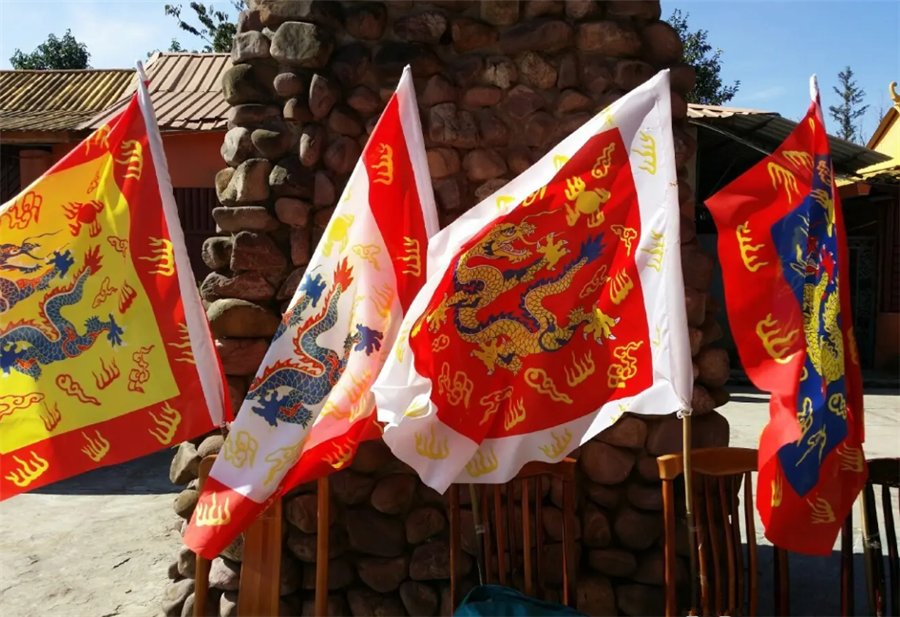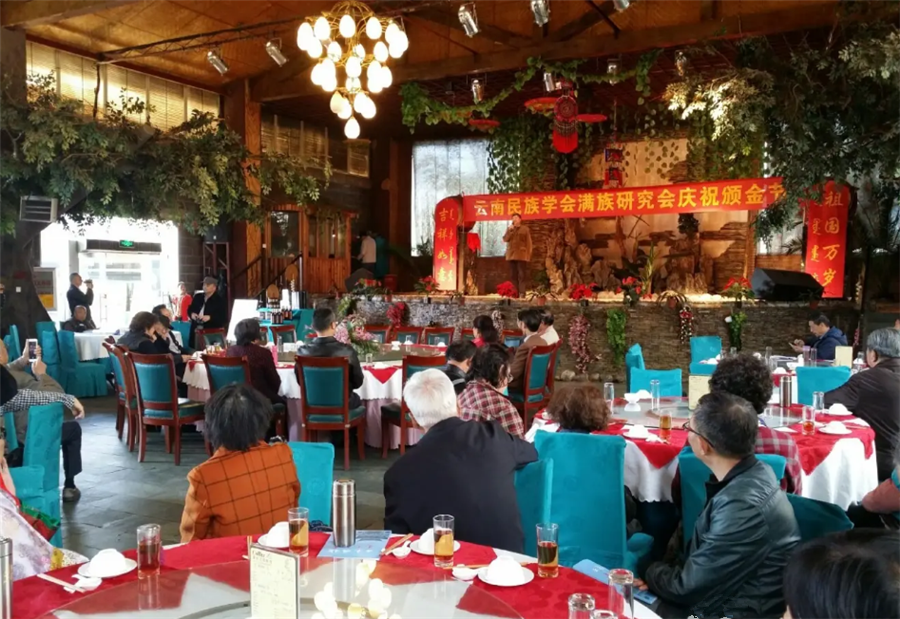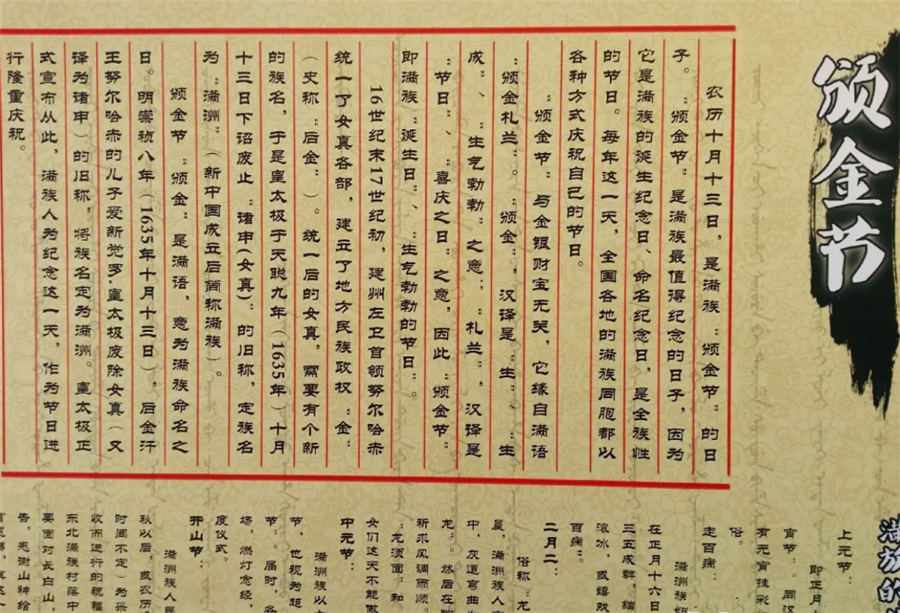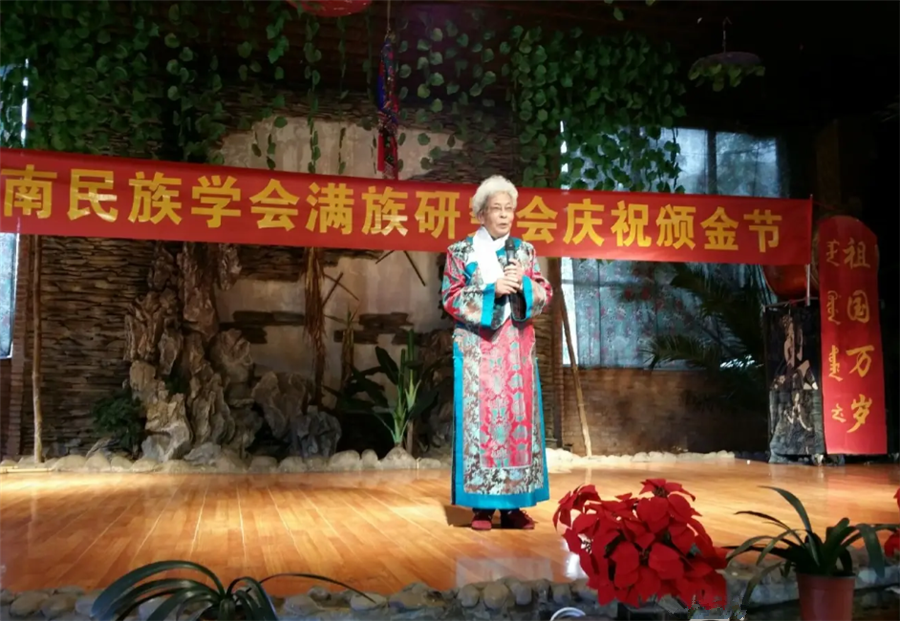Banjin Festival of Manchu Ethnic Minority
Overview of the Festival
- Chinese Name: 满族颁金节
- English Name: Banjin Festival of Manchu Ethnic Minority
- Festival Date: The thirteenth day of the tenth month of the lunar calendar.
The thirteenth day of the tenth month of the lunar calendar is the day of the Manchu “Banjin Festival.” The “Banjin Festival” is the most significant day for the Manchu people, as it marks the anniversary of their birth and naming, making it a festival celebrated by the entire ethnic group.

Origin
“Banjin” is a Manchu word that means the naming day of the Manchu people. On the thirteenth day of the tenth month in the eighth year of the Chongzhen reign of the Ming Dynasty (October 13, 1635), Nurhaci, the son of the Khagan of Later Jin, Aisin Gioro Hong Taiji, abolished the old name of the Jurchens (also translated as “Zhushen”) and established the ethnic name as “Manzhou.” Hong Taiji officially declared that from this day forward, the Manchu people would commemorate this day with grand celebrations. On October 13, the Manchu people in Xinjiang gather together to sing and dance to celebrate their festival. Many Manchu compatriots wear qipaos and other ethnic costumes, perform traditional folk dances, sing folk songs, and engage in various celebratory activities. They also prepare foods such as milk tea, sachima, rice cakes, and golden silk cakes for everyone to taste. Many Manchu writers, calligraphers, painters, artists, and photographers create poems and artworks, showcasing their exquisite skills, making the celebrations lively and interesting.
In the late 16th to early 17th century, Nurhaci, the leader of the Left Guard of Jianzhou, unified the various Jurchen tribes and established a local ethnic regime known as “Jin” (historically referred to as “Later Jin”). After unification, the Jurchens needed a new ethnic name, so Hong Taiji decreed on the thirteenth day of the tenth month in the ninth year of the Tiancong reign (1635) to abolish the old name “Zhushen” (Jurchen) and set the ethnic name as “Manzhou” (later abbreviated to Manchu after the founding of the People’s Republic of China). The following year, Hong Taiji changed the state name to “Qing.”
Historically, the Song Dynasty established by the Han people and the Jin Dynasty founded by the Jurchen Wanyan Aguda were constantly at war. The history of the two Song emperors being captured and referring to the Jin as vassals is a shameful memory for the Han people. As an outstanding politician, Hong Taiji understood that to govern all of China, he needed to win over the Han people; thus, he no longer used the ethnic name “Jurchen” or the state name “Jin.” In fact, the “Jin” of the Aisin Gioro clan and the “Jin” of the Wanyan clan, as well as the Jurchens led by Nurhaci and those of the Wanyan clan, were indeed not entirely the same.

Related Customs and Activities
December 8, 2007, in the lunar calendar, marked the traditional Manchu festival “Banjin Jie.” Over 600 Manchu compatriots gathered at the Huairou International Conference Center in Beijing to celebrate the 2007 Banjin Jie with singing and dancing. The Manchu people celebrate the lunar calendar’s thirteenth day of the tenth month each year as their ethnic birthday. In 1989, China designated this date as the official birthday of the Manchu people. Since then, the commemoration of the Manchu ethnic name has been referred to as “Banjin Jie.” The “Tanghechuan” area in the northern mountainous region of Huairou is a gathering place for Manchu commoners in the Beijing area, with a history of over 360 years. Currently, the region has 29 Manchu villages and a Manchu population of more than 20,000. Labaigoumen and Changshaoying are the only two fully established Manchu townships in the city.
The 2007 Banjin Jie celebration in Beijing was co-hosted by the Huairou Manchu Folk Culture Research Association and the Beijing Ethnic Friendship Association. On that day, Mr. Shu Yi spoke on behalf of the Manchu community in Beijing, and performers from the Central Nationalities Song and Dance Ensemble, Central University for Nationalities, Beijing Dance Academy, and the Tanghechuan Manchu Art Troupe presented exciting cultural programs, including Manchu dances and Peking opera performances. More than ten Manchu painters, artists, and calligraphers from the Changbai Calligraphy and Painting Institute showcased artworks created using Manchu characters, Jurchen script, and Manchu seal script.
















